The Ultimate Guide to the True Spring Color Palette

Key Takeaways
- **True spring colors** appear warm, bright, and clear and complement skin with golden undertones. Imagine bright sunshine yellow, coral, peach, turquoise and warm greens for a vibrant, glowing look.
- Focus on warm undertones in all your selections and avoid cool or muted shades that drag down the visage. Construct a cheat sheet of go-to warm shades like camel, ivory, caramel and golden browns.
- Opt for high saturation and clarity for true spring color palettes – steer clear of dusty or greyed tones. Anchor looks with one or two pops of bright color and offset with warm neutrals.
- Don't use heavy, dark shades – keep your values light to medium for an airy feel. Utilize soft pinks, sun yellows, and light oranges as part of their daily bases.
- Pin down your season by testing skin, eye and hair hints and trying on true spring swatches. Keep tabs on what things light up your face in a mull chart and iterate those victories.
- Sprinkle the palette throughout clothes, makeup, and décor in airy fabrics, transparent prints, and gold metals. Build a tiny accessory kit of gold, citrine, coral, turquoise and peridot for quick finishing touches.
💫 Learn Seasonal Analysis
Ready to explore the complete seasonal color analysis system? Discover how True Spring fits within the 12-season framework and learn about all the seasonal palettes that could enhance your natural beauty.
Learn Seasonal Analysis →The true spring color palette consists of warm, clear colors that have high chroma and light to medium depth.
Consider true spring colors like fresh yellow-greens, warm turquoise, peach, coral, golden yellow and bright tomato red. Neutrals skew warm and clear, think camel, warm beige, light navy and cocoa brown.
As metals, gold not silver. Lustrous fabrics or lightly woven fabrics complement the palette's brightness.
So you can select outfits, makeup and accessories effortlessly, the following pages map shades, combos and actual-life selections.
📚 Recent Articles
What is a true spring color palette?
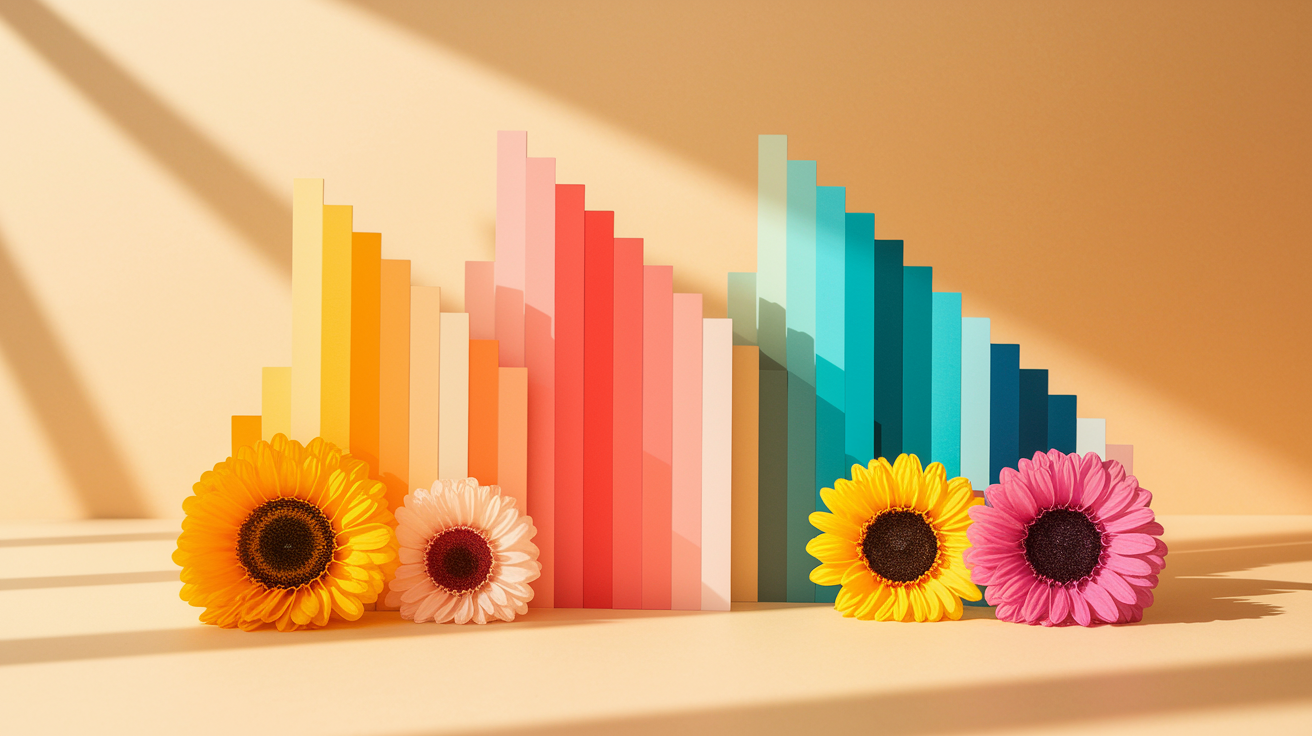
A real spring color palette is a group of warm, bright and clear colors created for those with golden undertones and glowing coloring. Color is never cool or muted—they have yellow bases and high saturation, so they read sunny, lively and clean. True Spring falls between Bright and Light Spring in **seasonal color analysis**, with a balanced but still distinctly warm palette.
I'm talking sunshine yellow, peach, coral, warm pinks, and turquoise—colors that illuminate natural warmth and glow and embody blooming flowers and freshly cut grass and clear skies.
1. Warm undertones
Warm undertones are what define the palette. All the hues have a golden or yellow undertone that seems sun rather than icy. You find it in skin as well as hair and eyes—golden brunettes, warm caramel, dark blonde and deeper nutty browns tend to reside in this season, accompanied by warm hazel, green or bright light brown eyes.
Choose clothes, makeup, and accessories that echo that heat: camel, warm beige, toffee, warm brown, and warm ivory for neutrals. For color, think yellows, warm greens, corals, oranges and browns. A blush in soft peach, coral or warm pink keeps the glow real in makeup.
Avoid cool/icy tones such as blue-based pink, icy blue or charcoal. They can gray the skin and sap warmth. Maintain your own list of signature shades—camel coat, coral knit, citrus yellow tee, aqua scarf, golden brown belt—for quick, flattering selections.
2. Bright saturation
True Spring dazzles in clear, high saturation color with no grey cast. It's got that crisp, fresh finish, like sun on clean water. Tomato red, vivid coral, aqua, bright turquoise, warm teal and periwinkle provide immediate lift.
Dusty mauve, taupe-grey or slate can make skin look washed out. Hold a swatch up to your face, and if your eyes twinkle and your skin looks illuminated from the inside out, it's probably right.
Construct ensembles around one or two brights, then tone down with warm neutrals. How about turquoise and camel, coral and warm ivory or citrus yellow and toffee? Let metals be warm–gold or bronze.
3. Light value
All but a few of the **True Spring colours** are light to medium in value. Deep, heavy shades drag the face down. Something about the pale pinks, sunny yellows, light oranges and fresh warm greens maintain the airy look.
Reserve the lighter hues for everyday and occasion wear. Maybe a warm ivory shirt with aqua earrings, or a light orange dress with tan shoes – it has that buoyant feel.
If you love depth, sprinkle it in little hits—golden brown belt, toffee bag—so the ensemble remains luminous at its heart.
4. The overall feeling
The entire palette has a joyful, energetic, warmness to it – like a clear spring morning, after the rain, colors shining, fresh. It highlights a healthy glow and softens lines, so features appear alert and welcoming.
These colors indicate accessibility and comfort, which comes in handy in initial encounters and team situations. For work, a camel blazer with a coral shell reads assured and toasty; for weekends, aqua with warm beige keeps it light and peppy.
Identifying your spring coloring
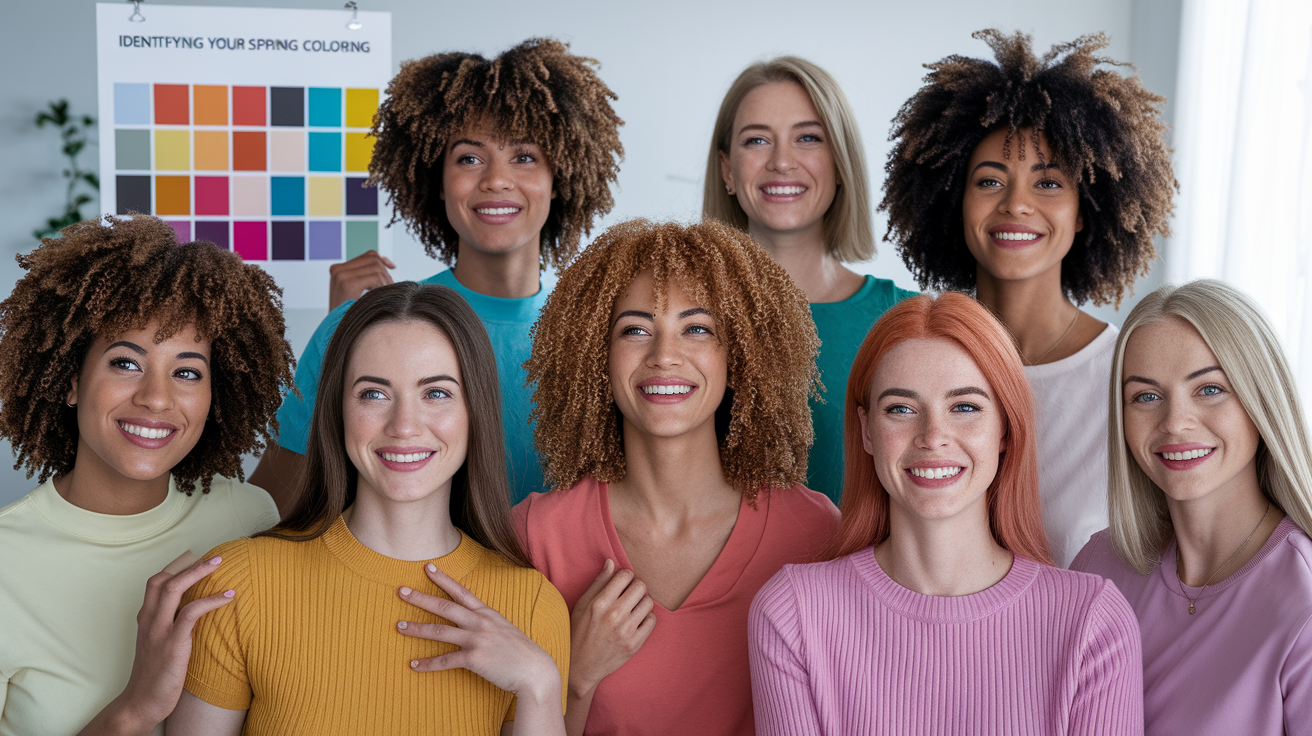
True Spring occupies that warm, bright corner of seasonal color analysis. The idea is to read the temperature, value and chroma of your features, then try them up against warm, sunny colors. Begin with a rapid skin, eye, and hair scan, then validate with a drape test of translucent warm shades such as coral, warm turquoise, and golden chartreuse.
Observe what shades brighten your face and which make you look washed out. Record results in an easy chart so patterns pop.
Skin's warmth
Seek golden, peachy or honey undertones. Skin can be fair to deep—the key is warmth, not depth. When the undertone is correct, warm hues tszuj down redness and brighten sallowness and your features feel more defined.
Compare gold and silver to bare skin in daylight. If gold melts in, and silver looks sharp or flat, that leans True Spring. If both work, see which one diminishes shadows under your eyes — gold should win.
Greenish veins may show, but vein color differs by skin depth, so take it as one hint. Many True Springs tan, but not all. Then the legend that True Springs have to tan is a myth, too.
Make a checklist: warm undertone (yes/no), reacts better to gold (yes/no), looks brighter in warm clear colors (yes/no), chroma of skin appears clear not muted (yes/no). If the majority of boxes say "yes," proceed.
Eye's clarity
Eyes usually a distinct green, blue or light hazel with a bright ring or golden rays. They appear illuminated from inside instead of hazy.
There's no gray film or murky brown over True Spring eyes. If your eyes twinkle around warm aqua, leaf green or marigold, that's a pretty powerful indicator.
Grab a color wheel. Position your eye color close to hot, high chroma areas. If it corresponds to warm green, turquoise or golden amber, tick it.
Test with scarves or tops: warm coral, tomato red, warm jade, daffodil. If your eyes pop and whites look whiter, you're headed down the right path.
Hair's goldenness
Natural hair often sits between levels 4–8N with golden or red undertones: golden blonde, light auburn, warm light brown, or dark blonde with sun-kissed glints. Chroma runs towards brightness, hair bounces light instead of consuming it.
Stay away from ashy or cool browns and icy blondes. They mute the warmth in your skin and eyes. Fiery red can work here---True Spring, like True Autumn, can rock copper and vibrant auburn.
Scan old photographs. Which years did your hair look vibrant against your skin? Take a look at the tone family and illumination. That background assists you identify your genuine worth and warmth equilibrium.
- Golden blonde, honey blonde, strawberry blonde
- Warm dark blonde, light golden brown
- Natural red, copper, auburn
- Caramel brown, toffee brown
The spectrum of spring colors
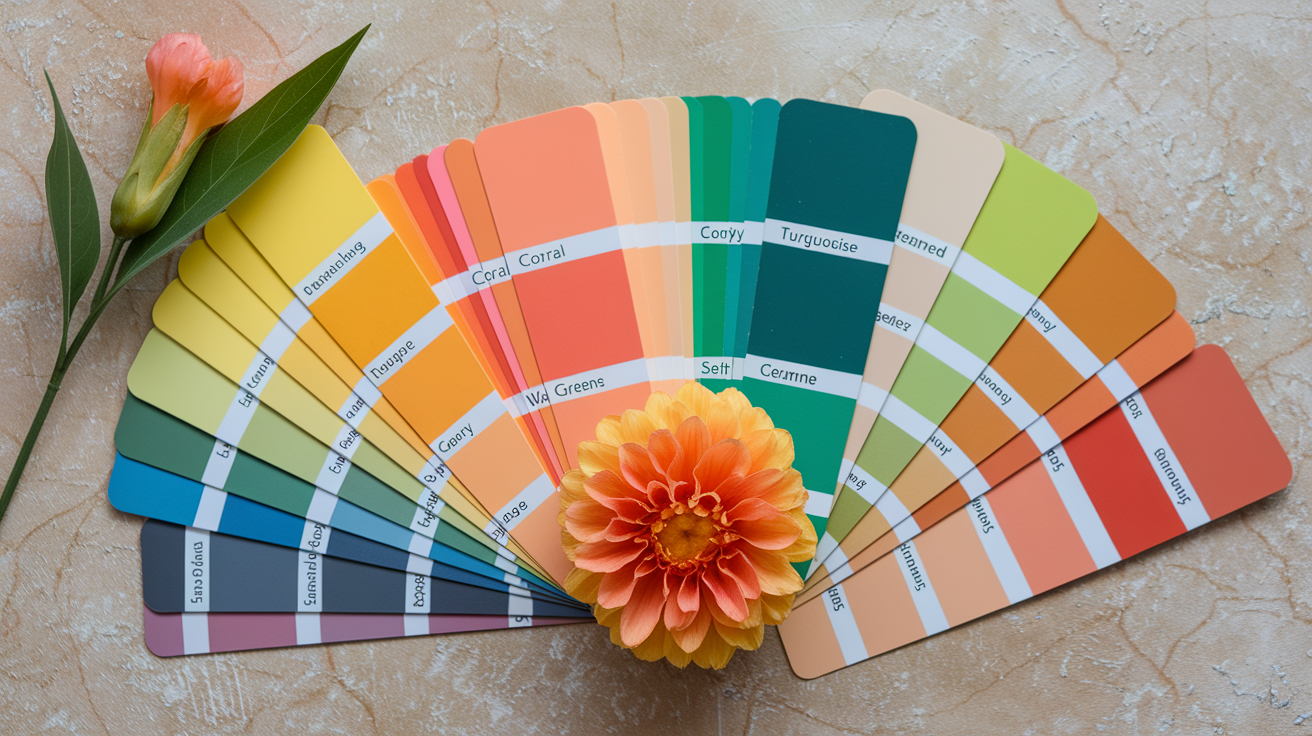
True Spring nestles within the broader Spring clan, characterized by warm, light, bright, and fresh tones. Imagine a single band of color that stretches from the very warm, most yellow-rich end (Warm Spring) to the cooler, least yellow end (Bright Spring), with Light Spring and True Spring in between. True Spring is warm, bright, and clear—like sun-drenched meadows, new flowers, and sparkling, post-rain skies, embodying the true spring palette.
It favors colors that feel alive: sunshine yellow, coral, peach, warm greens, turquoise, and orange-red. You can spot near-autumnal Corn Yellow, sharp Bright Navy, and the faintest Peachy Pink. These colors bring warmth and brightness to golden or peach-based skin tones, illuminating blue, green, hazel, and light brown eyes, as well as golden blonde to light auburn hair colors.
Sunshine yellow serves as a trusty accent color that elevates neutrals and prints. Coral and peach add a healthy glow. Team coral with ivory during the day or with Bright Navy for crisp contrast. Warm greens—leaf, grass, or lime—are stalwart contenders for knits, casual jackets, and bags in a warm spring color palette.
Turquoise and true blue keep the palette crisp. Try a turquoise shirt with camel trousers, or a true blue tee with caramel leather. Orange-red is good for lipstick, a silk scarf or a statement knit. If you prefer softer, place the lightest Peachy Pink or light apricot closest to the face. If you love strong contrast, pair coral with vibrant navy or turquoise with warm green.
Drape a base of warm neutrals that anchor the brights. Camel, ivory, and caramel create a perfect versatile foundation for suits, coats, denim-style chinos, and belts. Ivory trumps stark white here because it honors the palette's warmth and keeps the look soft, aligning with true spring characteristics.
Bright Navy is a sophisticated anchor color for workwear and capsules — it accents coral with crispness, soothes orange-red — without muting either. Construct an easy reference chart or swatch book for quick cross-checking. Cut tiny fabric or paper swatches of your best colors—sunshine yellow, coral, peach, warm greens, turquoise, orange-red—along with camel, ivory, caramel and Bright Navy.
Identify each with the color name and indicate if it's best for tops, bottoms or accents. Tuck it in your shopping bag, or click crisp pictures in daylight to save on your phone. Add notes for makeup: peach blush, coral or orange-red lip, warm gold highlighter, and teal or bronze liner for play.
This same map guides selecting décor accents—turquoise glass, coral cushions, camel throws—so rooms feel upbeat yet calm, embracing the essence of the spring color season.
Beyond the basics: styling your palette
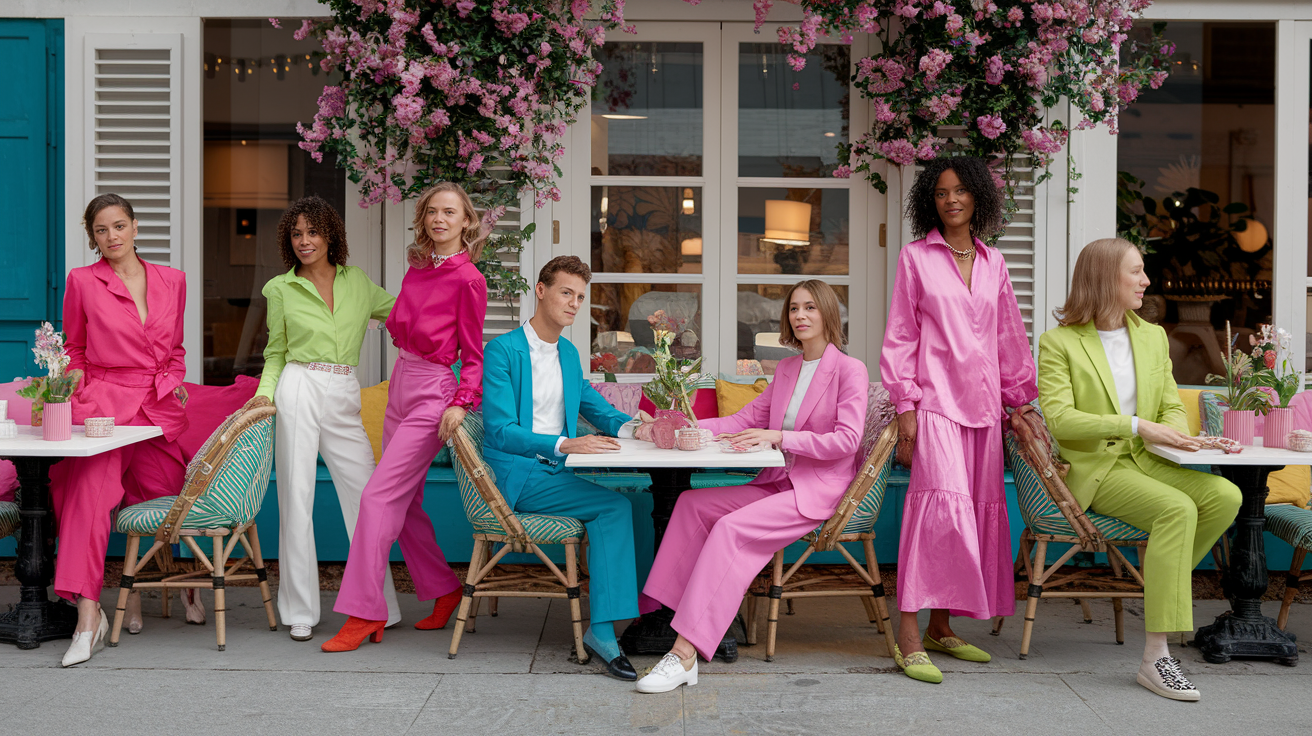
True spring is warm, bright and sunny–coral, peach, golden yellow, clear turquoise. Create outfits, makeup and décor with these colors to appear fresh, not faded. Black is never good to this palette—it can dull your shine.
Selecting from your palette streamlines decisions, reduces fitting room time and maintains consistency among outfits, accessories and even hardware such as zipper and belt buckle finishes.
Fabric and texture
Lightweight fabrics mirror the palette's buoyant mood. Opt for cotton poplin, fine linen, silk twill and silk-cotton blends that allow color to come across crisp and vivid. These breathe well in the heat and keep the chroma nice and crisp.
Texture adds dimension without muting the sparkle. Eyelet in warm ivory, guipure lace in apricot or soft knits in melon or coral add movement that flat fabric can't.
Stay away from heavy matte cloth in dark colors—charcoal wool, thick matte jersey, or dense flannel—because it absorbs light and drags down spring energy.
Checklist:
- Best bases: cotton poplin, lawn, sateen, lightweight denim (light wash)
- Breezy naturals: linen (soft, not slubby), ramie, hemp blends
- Luxe lightweights: silk twill, silk crepe (light), silk-cotton
- Cozy layers: fine-gauge merino, cashmere in warm brights
- Skip: heavy tweed, dark ponte, flat matte black, dense felt
Prints and patterns
Choose prints with warm, clear grounds—ivory, warm cream, light camel or soft apricot. Motifs should feel lively: small-to-medium florals, polka dots, scallops, or upbeat geometrics in coral, peach, leaf green, and aqua.
Strut your stuff: mix and match 2-4 True Spring colors in one print for effortless blending. A cream base with gold yellow, spearmint and tomato-coral ties back to tons of solids.
Super dark or faded prints can suck the life from your face and compete with golden undertones, so save deep navy or black-weighted numbers for occasional pops, not the starring role.
- Ideal: clear florals, playful dots, warm gingham, sunny stripes, soft geometrics
- Good bases: cream, warm sand, light camel
- Color mix: 2–4 warm brights; add warm neutrals
- Avoid: gray-cast, dusty, or near-black prints
Metals and gems
Gold is your anchor metal, reflecting the palette's warmth and making eyes sparkle. Lean on yellow gold for your earrings, chains and belt buckles.
So wear your best metals—handbag chains, shoe buckles, eyewear frames—everywhere, for an uninterrupted, sleek streak through the ensemble.
Gemstones that sing with True Spring: citrine, turquoise, coral, peridot, warm opal, sunstone. They read sharp, not hazy.
Silver and cool metals can battle with golden undertones if you love them, keep them dainty or mixed in with warm gold.
Build a small capsule: gold hoops, a fine chain, a citrine pendant, a turquoise ring, and a coral bead strand. These elevate closet basics quick—imagine a cream tee, light-wash denim and a peach cardigan—minimal effort.
Common spring color analysis mistakes
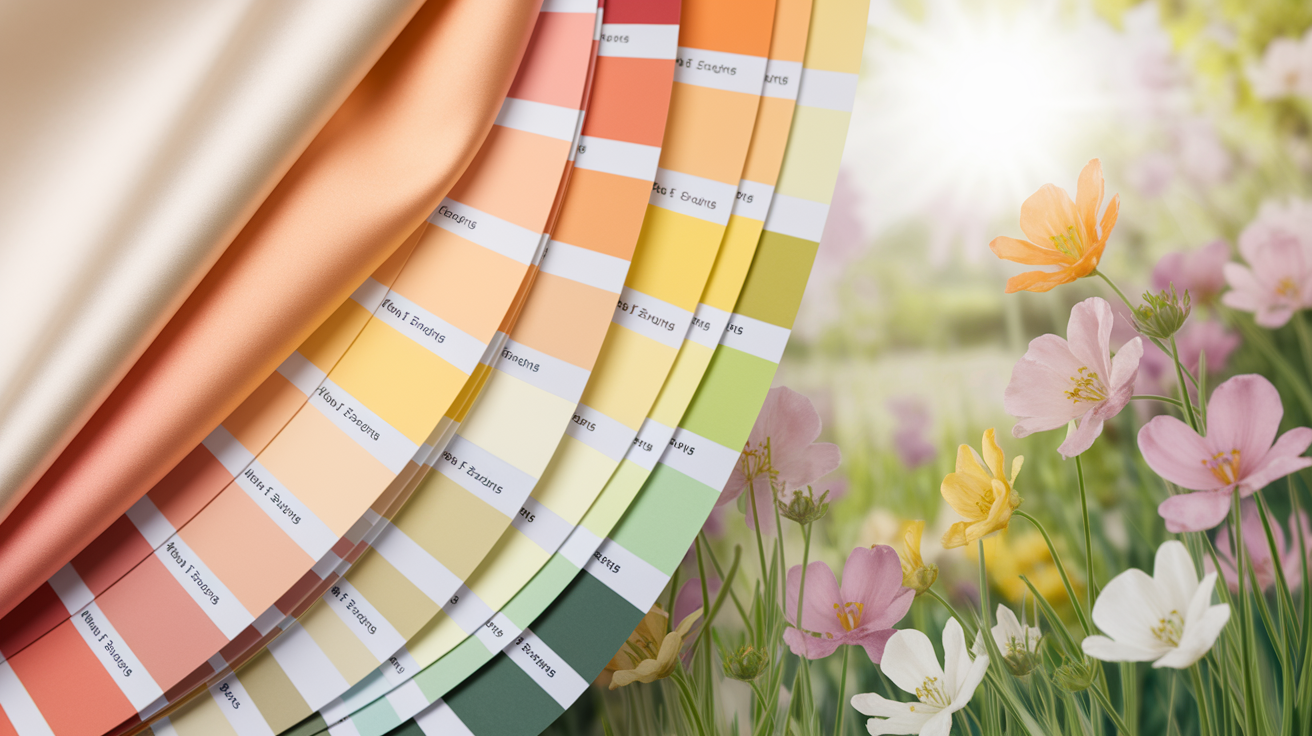
True Spring is characterized by warm, clear, and medium-light hues, embodying a true spring palette that falls between Light and Bright Spring. This balance creates a vibrant mix of bright spring colors, offering that fresh sun-washed look that reads clear and warm on the skin.
Confusing True Spring with Light Spring or Bright Spring
Light Spring leans lighter and softer, so colors have more of a pastel, delicate feel. Think butter yellow or light aqua that can wash out a True Spring face if overdone. Bright Spring amps up the clarity and contrast, tapping some coolness from Winter, so hues are punchier and sharper.
Despite their superficial brightness, neon coral or hyper-bright lime can look loud or harsh on a True Spring. If you're unsure, test out mid-value warmth around the face. If a color requires additional brightness or additional white to function, it's most probably Bright or Light Spring, not True Spring.
Which is why some "Spring pinks" let you down — a lot pinks have a cool or chalky cast to them, and the good True Springs tilt more peach, salmon or warm watermelon.
Wearing cool or muted colors
Cool or muted tones mute skin's glow and cast shadows. Dusty rose, slate blue and cool gray are traps. They wear politely on a hanger, or flat on a True Spring. Lighter, softer colors can fool.
Although gentle seeming, a light olive khaki typically has muted, gray-green that leaches warmth. Browns are tricky as well. Ashy taupe or cool expresso deaden. If you must have browns, go with warm camel, golden tan or a light chestnut with a yellow base.
A quick test: place a warm, clear coral next to a cool mauve. If eyes light up with coral and fade with mauve, you're witnessing undertone in action.
Overusing dark shades
Too much depth drags down the palette's lightness. Deep orchid or inky teal can seem sophisticated in theory but slide into Winter-level drama. Even coral gets miscast as it turns rich and dark, then starting to look Winter-bright instead of Spring-warm.
One typical slip is pushing Spring reds in a Winter direction by making them darker and brighter. Keep reds warm and mid-value–tomato, geranium–so skin stays lively.
Skipping a fan or swatch check
Memory and screens both deceive. Nothing like a genuine spring color enthusiast or authenticated swatch to slim down options quickly! Compare borderline shades—coral vs deep coral, golden tan vs khaki, warm pink vs icy pink—right on skin in daylight (around 10:00–14:00).
If you can't easily separate Spring from Autumn or Winter, place fans next to each other and look for lightness, warmth, and airiness. Yellow undertones get cast as Winter — a fan reveals Winter's cool brights look stark, while True Spring's warm clears blend in.
Remember that not all Springs can wear the same intensities – rich orchid or punchy coral might be right for Bright Spring, but not True. If you don't fit neatly into Bright, True or Light, create a little test set — 5-7 tops in various mid-warm colors — and monitor which colors you find yourself drawn to and receiving compliments on.
The psychology of wearing spring colors
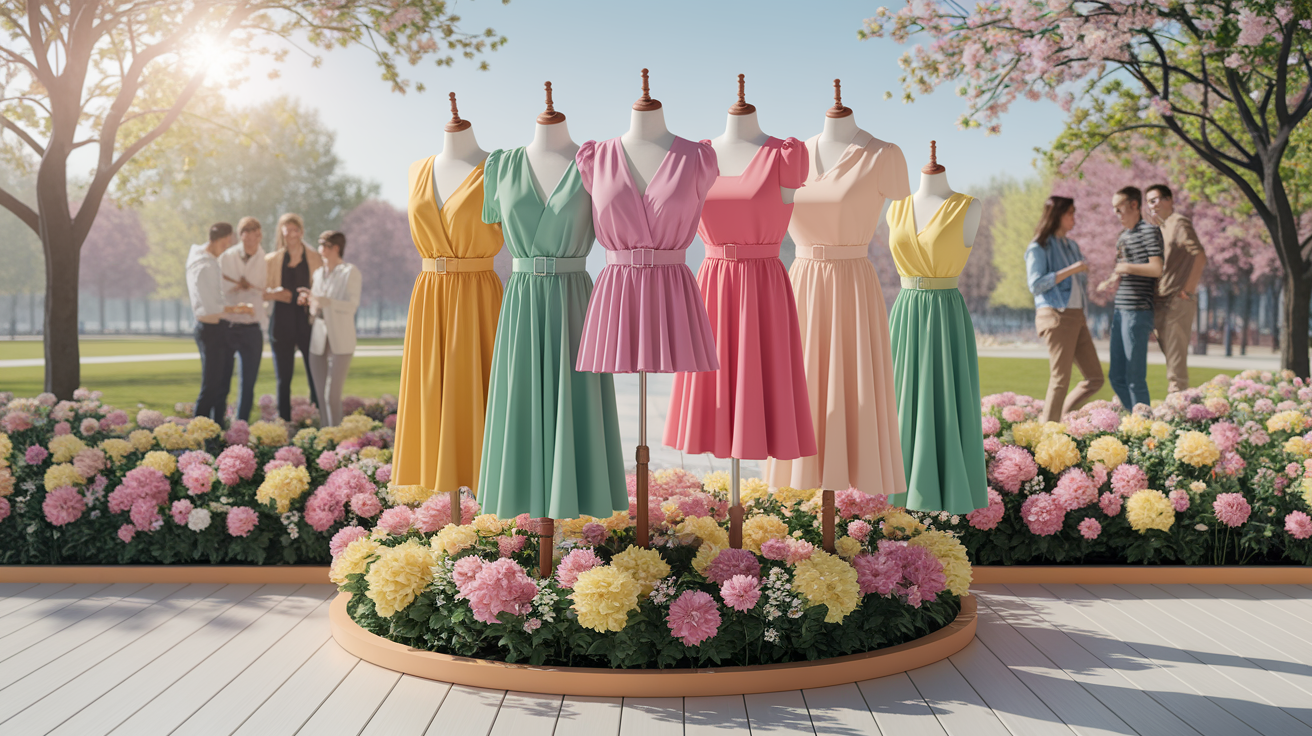
Genuine bright spring colors, clear, warm, and vibrant, exude optimism, energy, and approachability. They echo the mood of the season: fresh light, new growth, and open skies. On the body, these colors can elevate mood, soften initial impact, and render features more radiant. Skin can appear clearer, eyes more bright, and hair colors more warm because the palette's light, clean quality bounces up and imparts a subtle glow.
Studies in color psychology and applied fashion research point in the same direction: warm brights often raise confidence and ease social exchange. Individuals report feeling more outgoing in coral or warm turquoise than muted gray, and onlookers rate them as friendlier and more open. That impact multiplies when colors correspond to an individual's true spring characteristics and natural coloring.
A warm peach scarf near the face can draw warmth from the skin and diminish the appearance of dullness, encouraging self-confidence in subtle but very real ways. In the office, select a clean, mid-value color close to your face to exude warmth without sound—such as a goldenrod blouse beneath a navy blazer, or a teal tie with a white Oxford.
For social events, one bright anchor can spark ease: a leaf-green dress with nude shoes, or a poppy red shirt with stone pants. If bold feels fresh, begin with accessories. A citrus belt, enamel earrings, or a small coral bag can brighten up a neutral base and inject a note of personality.
These little nudges keep the psych of spring going all year long and keep outfits feeling chipper without screaming. Balance is important. Pair depth with softness to create harmony: teal with peach, leaf green with warm beige, or clear aqua with light camel.
The objective is a unified aesthetic that resonates as 'you', not a Halloween get-up. Keep color placement clever. Put the clearest warmest colors at your neckline to brighten your face. If you like calm, use softer lights—apricot, light warm pink—on larger expanses, then add a sharp accent at collar or lip.
Match undertone to undertone: warm skin tones tend to glow with golden yellows and tomato reds; neutral-to-warm love warm turquoise and leaf green. This match enhances attractiveness and frequently alters posture and voice because the wearer feels noticed.
Here's a quick cheat sheet to common true spring shades and their general vibe.
| Color | Usual feeling it gives |
|---|---|
| Coral | Cheerful, open, warm |
| Golden yellow | Sunny, optimistic, lively |
| Leaf green | Fresh, balanced, hopeful |
| Warm turquoise | Clear, friendly, calm-energized |
| Peach | Soft, caring, inviting |
| Tomato red | Bold, spirited, social |
| Teal | Grounded, creative, composed |
Conclusion
To sum it up, true spring sings with pure warm bright color. Dream fresh cut grass, sweet melon, blue sky, honey gold. Skin just glows. Eyes appear bright. Hair appears thick. Outfits just seem to feel breezy.
To create outfits, combine two brights with one light neutral. Sample coral tee, washed denim, tan loafers. Or lime shirt, white jeans, soft gold hoops. Work go teal blouse, camel pants, cream belt. Keep metals golden. Keep prints punchy. Reserve black for tiny bits.
To avoid errors, try it in the light of day. Hang color close to your face. Test your eye whites. Believe in your instinct.
For starters, extract three spring hues you adore. Rock 'em this week. Take a photo. Notice what excites you. Tell us about your victories.
Frequently Asked Questions
What is a True Spring color palette?
True Spring features a warm spring color palette with bright, clear colors like crisp greens, sunny yellows, peach, coral, and turquoise. This true spring palette shines best with gold metals, creating a light, vibrant, and warm overall appearance.
How do I know if I'm a True Spring?
Seek for warm undertones, bright clear eyes (green, blue, light hazel), and golden or strawberry hair colors. Your skin shines in a warm spring color palette and appears ashen in cool or muted colors. Gold jewelry is more flattering than silver.
What colors should True Spring avoid?
Stay away from cool, icy colors and muted shades. Avoid jewel tones like cool sapphire and gray heavy shades, as they can sap warmth from your features, especially during the bright spring color season.
Can True Spring wear neutrals?
Yes. Opt for warm neutrals such as ivory, cream, warm beige, camel, and light camel, which are part of the true spring palette. Avoid stark white and cool gray, as soft, warm browns from the warm spring color palette pair nicely for basics and outerwear.
How do I build a True Spring wardrobe?
Begin with warm neutrals for your foundation pieces, then incorporate bright spring colors like coral, aqua, and warm pink. Maintain prints that are bright and crisp while opting for gold accessories to enhance your overall appearance.
What makeup suits True Spring?
Try warm, light, and fresh tones from a true spring palette. Coral or peach blush, warm pink or coral lips, and golden-brown eyeshadows will enhance your radiant look. Opt for warm foundation with a natural finish, avoiding cool mauves, blue-based reds, and gray taupes.
How do spring colors affect mood?
Vibrant, warm shades from the true spring palette seem inspirational and inviting. They represent vitality and hope, enhancing your overall appearance and giving you a radiant look.